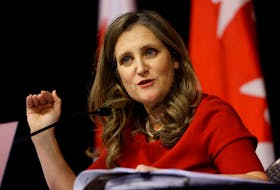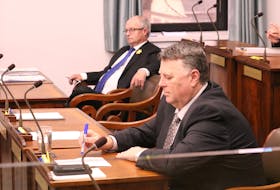By Anne Graham
Six months after the provincial budget was released in April 2016, one budget issue was still being hotly debated: a $1-million reduction in the budget of Newfoundland and Labrador libraries, which was slated to close 54 of the province’s 95 libraries.
Reaction to the proposed library closures was swift and prolonged and it eventually prompted the minister of Education and Early Childhood Development, on June 30, 2016, to suspend the decision to close the libraries and to make a promise of an “organizational and service review” of the public library system, which included mention of public consultation.
The initial public response to this reprieve on library closures was positive. However, the consultation process, which began on Oct. 5, 2016, generated its own set of problems. Notably, many of the participants walked out of the meeting held in St. John’s on Oct. 6 due to frustration with the format of the meeting and the absence of elected officials. The format has been reportedly “tweaked” since then. While the library review is still ongoing at the time of writing, events related to the proposed library budget cuts can act as a useful case study on when and how to best incorporate public consultation in governance decisions in the future.
First, there has to be a determination of which kinds of decisions will warrant public consultation. The reaction to the announced library closures and to the library review processes demonstrate that proactively engaging the public in a decision will always be better received than doing so after a decision has been made and public outcry has forced the consultation. To be fair, the scale of budget cuts in April 2016 meant that it may have been particularly difficult for the government to assess which of the many important issues needed public engagement since it would not be feasible to consult on all of them.
Reaction to the meeting in St. John’s demonstrates that the government was not in touch with the level of public interest and anger
related to the threat of library closures.
The province has a Public Engagement Guide, which provides a series of questions that can help determine when to use public engagement. Two of these questions are particularly pertinent to this issue: (1) Is there a clearly defined question or concern? (2) Is the public interested in the issue or question at hand? The answer to the first question is a clear yes, while the second question requires discernment.
However, since the issue of rural life in Newfoundland and Labrador has always been important to the cultural fabric of the province, it can be surmised that the closure of services in towns and smaller communities will generate more public concern than, for example, an increase in certain fees, which does not tap into an issue of sociocultural importance.
The second issue concerns the proper mechanisms for public consultation. Reaction to the format of the meeting in St. John’s can provide us with some useful information here. The complaints of the participants in St. John’s concerned the lack of notice given for these meetings, the absence of elected officials at the meeting, and the hiring of an outside firm of consultants at a cost of $187,000. Further complaints concerned the ability of participants to express their views openly (the session was structured around predetermined questions) and access to the meetings, as some people were turned away at the door.
Again, the province’s Public Engagement Guide provides helpful information regarding some of these complaints, including guidelines regarding sufficient notification of the engagement activities and a process that is adaptive to the needs of participants. Reaction to the meeting in St. John’s demonstrates that the government was not in touch with the level of public interest and anger related to the threat of library closures. Additionally, a claim by a government official that it was feared that the presence of elected officials at the consultations would have the effect of the public feeling less free to express their views “openly” demonstrates perhaps that the government is not in touch with the current level of political engagement of residents of the province.
Governments everywhere are recognizing the increased need for public engagement and input into significant policy decisions as a result, in part, of a more educated and engaged electorate. The province’s Public Engagement Guide also mentions this need. Reflecting more fully on both the historically important issues of the province as well as the new level of political awareness and engagement of the citizenry should help the provincial government in the future to assess which kinds of decisions would benefit from public consultation and what public expectations are concerning the processes of this consultation.
The government might also look to guides to public consultation created in other jurisdictions to further refine its own guidelines. The Principles and Best Practices guide created by the Office of the Auditor General of British Columbia is one such example.
About the Author
Anne Graham (Modern Languages, Literatures and Cultures, Memorial University of Newfoundland) is a specialist of early modern French theatre. She has published in various Canadian and international journals. Her current projects include an article on the evolution in the representation of Sara in French medieval plays on Abraham and Isaac and a translation into modern English of the 1550 French tragedy, “Abraham sacrifiant.”









